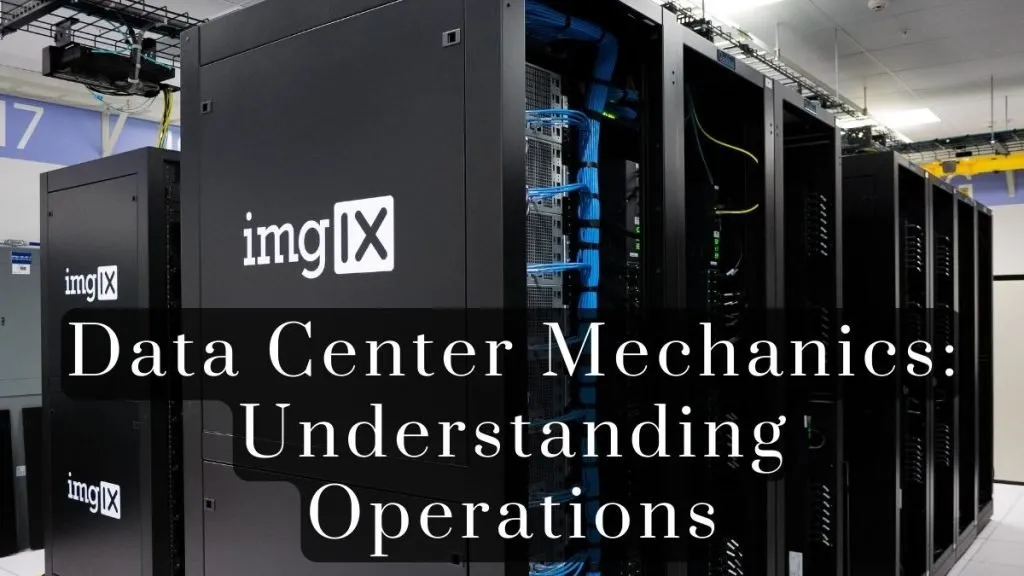
A data center, the pulsating heart of any modern enterprise, can be visualized as a grand orchestra.
Like finely tuned instruments, each component plays a crucial and distinct role.
Together, they form a symphony of data transaction, storage, and processing that keeps a business humming.
These bustling hubs of servers, switches, and routers hum with ceaseless activity, ensuring that a business’s digital operations continue 24/7.
This article will take you through the intricate workings of a data center, elucidating the marvel that it truly is in the realm of digital infrastructure.
Components of a Data Center
At its core, a data center comprises four primary components: servers, storage units, networking equipment, and power/cooling systems.
Orchestrating these components within a data center is challenging, requiring a robust and detailed approach. By leveraging the comprehensive capabilities of dgtl Infra Data Center Management, businesses can ensure seamless operation, optimal performance, and longevity of their digital heart – the data center.
This fine-tuned management enhances the efficiency of data centers and helps enterprises stay agile in the rapidly evolving digital landscape. Let’s delve into each one in detail.
Servers
The servers are the workhorses of a data center. They are high-powered computers that host websites, applications, databases, and other resources utilized by end-users across the globe. Each server can be specialized to perform specific tasks.
For instance, a web server handles client requests and delivers web pages across the internet, while a mail server manages emails.
Servers handle massive data traffic, processing requests and delivering data swiftly and reliably.
They operate round the clock, ensuring that a company’s digital services are always available to its clients.
Storage Units
As the name suggests, storage units are responsible for storing all the data within a data center.
They come in different forms, including hard disk drives (HDDs), solid-state drives (SSDs), and storage area networks (SANs). Each type of storage unit has its specific advantages.
HDDs offer high capacity at a lower cost, SSDs provide faster data access, and SANs allow for scalability and flexibility in data management.
These storage units are designed to withstand the constant data read/write operations, ensuring data integrity and reliability.
They also incorporate various levels of redundancy to protect against data loss, ensuring that the company’s critical data is always available and secure.
Networking Equipment
Networking equipment forms the intricate web that links all data center components, facilitating swift and seamless communication.
This equipment includes switches, routers, and firewalls, among others. Switches are responsible for directing data traffic, ensuring that data packets reach their intended destination within the network.
Routers connect multiple networks, facilitating data exchange between them – an essential function for any data center connected to the internet.
Firewalls play a critical role in security, safeguarding the data center by monitoring and controlling incoming and outgoing network traffic based on predetermined security rules.
These devices ensure efficient and secure data transmission across the data center and the wider world.
Power and Cooling Systems
Power and cooling systems are the backbone of any data center, keeping all equipment running optimally.
Data centers consume massive amounts of power to keep servers, storage units, and networking equipment operational 24/7.
To ensure this constant electricity supply, data centers have backup generators in case of power outages.
These backup systems kick in immediately to prevent any downtime that could lead to significant losses for a business.
Additionally, data centers require robust cooling systems to prevent overheating, which can damage equipment and cause costly downtime.
These cooling systems use various methods, such as air conditioning units, water cooling towers, and computer room air handlers (CRAHs), to maintain the data center’s ideal temperature and humidity levels.
How a Data Center Operates
Now that we have a good understanding of the components of a data center, let’s dive into how they work together to keep businesses up and running.

Data Processing
When data enters the data center, it is first received by the servers. These high-powered computers process the incoming data by executing specific instructions on the data based on the applications or services they are hosting.
Once the data is processed, it is returned to the storage units for safekeeping until it is needed again.
Data processing speed and efficiency are crucial for a data center, as they directly impact the overall performance of digital services.
During this process, networking equipment enables fast and secure data transmission while power and cooling systems optimize server operations.
This perpetual data processing cycle fuels businesses’ digital operations, keeping them running 24/7.
Data Storage
Data centers have massive storage capacities, storing vast amounts of digital information for businesses.
When data is received from users or generated by applications, it is stored in designated storage units based on predetermined parameters.
These storage units are designed to handle high volumes of data and ensure its integrity through various means, such as redundant storage systems and regular backups.
The stored data can then be accessed by servers or retrieved by end-users upon request.
Redundancy and Failover
Data centers are designed with a high level of redundancy to ensure that no single point of failure can bring down the entire system.
This means multiple backups and failover systems are in place at all levels, from servers to power supplies.
In case of any hardware failure or power outage, these backups kick in immediately to prevent any interruption of services.
This ensures that a data center can continue operating seamlessly, even in the face of unexpected challenges.
Maintenance and Upgrades
Regular maintenance is essential to keep a data center functioning at its best. This includes routine checks on equipment, software updates, and hardware upgrades as needed.
These measures help prevent any unexpected issues and ensure that a data center is always running at optimal levels.
With the fast-paced technological advancements, data centers must also undergo upgrades periodically to keep up with the latest hardware and software developments.
Don’t miss: Why Monitoring Your Application is Important?
The bottom line
A data center is an intricate and vital part of any modern business. It houses the digital infrastructure that enables companies to store, process, and transmit vast amounts of data seamlessly.
With its four key components working harmoniously, a data center is crucial in keeping enterprises running smoothly and efficiently.
As technology evolves, so will data centers, ensuring they remain at the forefront of digital operations.
So, data centers are here to stay and play an essential role in our increasingly digital world.












